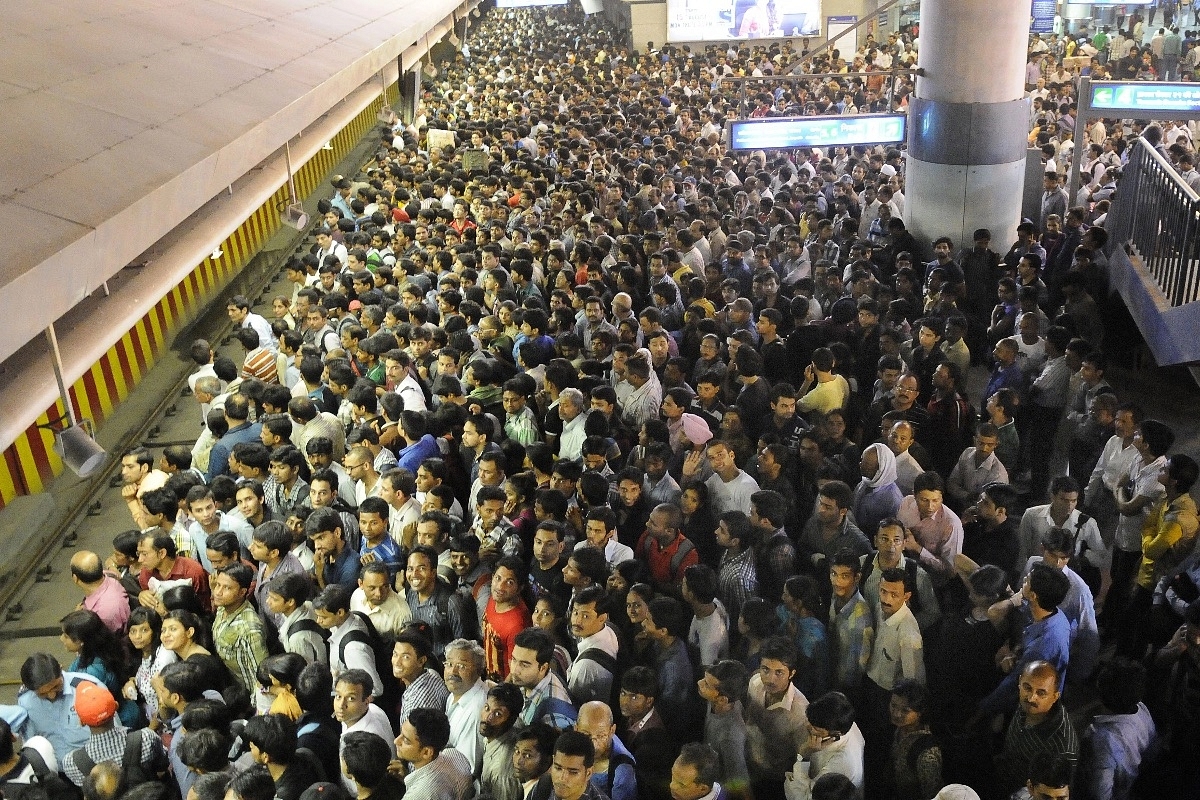Context
India To Become Most Populous Country In 2023; That May Influence Its UNSC Permanent Seat Claim

Representative Image (Sunil Saxena/HindustanTimes via Getty Images)
India is expected to surpass China in population in 2023, according to a UN report, and this may have a favourable effect on its UNSC bid.
The report, titled 'World Population Prospects 2022', was released on 11 July. It was compiled by the Population Division of the UN Department of Economic and Social Affairs.
India’s population stands at 1.412 billion in 2022, compared to China’s 1.426 billion.
The global population is projected to reach 8 billion on 15 November this year.
Milestone year: “This year’s World Population Day falls during a milestone year, when we anticipate the birth of the Earth’s eight billionth inhabitant. This is an occasion to celebrate our diversity, recognize our common humanity, and marvel at advancements in health that have extended lifespans and dramatically reduced maternal and child mortality rates,” UN Secretary-General António Guterres said.
“At the same time, it is a reminder of our shared responsibility to care for our planet and a moment to reflect on where we still fall short of our commitments to one another,” he added.
Population policies, India vs China: Director of the Population Division John Wilmoth deliberated on the contrasting policies and their consequences in China and India. He noted:
China's policies in the 1970s and 80s were "very effective in reducing the fertility level," leading to a rapid slowdown in population.
China also inverted the age distribution and now the concern is about there being a much older population relative to the rest of the population.
India brought the fertility rate down more slowly. The smoother transition means "there aren't the same kind of discontinuities in the historical patterns" and the ageing of the population hasn't been very rapid.
"...in some ways that may be better to manage, a better circumstance, in the long run for the economy to have that kind of more gradual demographic change than the very rapid change," as in China.
Implications for India at the UNSC: Wilmoth said India's emergence as the most populous country will help it claim a permanent seat at the UN Security Council.
“What is the significance of being the largest population in the world? I think you have certain claims on things. I wonder what will happen in terms of the discussion around…roles at the UN and the roles of the permanent five members of the Security Council," the UN official said.
“If India becomes the largest country, they may think that that gives them a claim that they should be part of …they’ve been claiming that they should be part of that group (permanent member of the Security Council) anyway. But, you know, it may strengthen their claim,” Wilmoth said.
Global outlook: More than half of the projected increase in global population up to 2050 will be concentrated in just eight countries: the Democratic Republic of the Congo, Egypt, Ethiopia, India, Nigeria, Pakistan, the Philippines, and Tanzania.
The world’s two most populous regions in 2022 were Eastern and South-Eastern Asia, with 2.3 billion people, representing 29 per cent of the global population, and Central and Southern Asia, with 2.1 billion, representing 26 per cent of the total world population.
Future projections: The world’s population could grow to around 8.5 billion in 2030, 9.7 billion in 2050, and 10.4 billion in 2100, in part due to increased levels of life expectancy, the UN report said.
Support Swarajya's 50 Ground Reports Project & Sponsor A Story
Every general election Swarajya does a 50 ground reports project.
Aimed only at serious readers and those who appreciate the nuances of political undercurrents, the project provides a sense of India's electoral landscape. As you know, these reports are produced after considerable investment of travel, time and effort on the ground.
This time too we've kicked off the project in style and have covered over 30 constituencies already. If you're someone who appreciates such work and have enjoyed our coverage please consider sponsoring a ground report for just Rs 2999 to Rs 19,999 - it goes a long way in helping us produce more quality reportage.
You can also back this project by becoming a subscriber for as little as Rs 999 - so do click on this links and choose a plan that suits you and back us.
Click below to contribute.
Latest